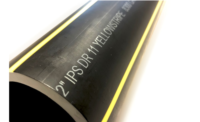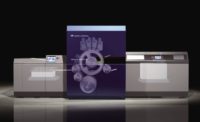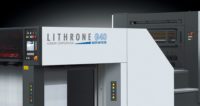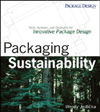LED technology first entered the UV curing world in 2002 and has steadily gained traction across a wide range of printing, coating, and adhesive applications. The earliest adoptions occurred in structural bonding adhesives and UV digital inkjet for wide format sign printers and both single pass and wide format digital inkjet product decoration. It was followed by screen and flexo printed graphics; sheetfed offset; 3D printing, and coatings and sealants for electronic assemblies, fiber optics, and wood.
The first UV LED equipped narrow web flexographic press was formally introduced to the world at Label Expo 2009. It utilized the best lamp and flexo ink technology available at the time. This was a significant event in the converting industry, and while it generated market buzz, there was no immediate commercial adoption. At the time, tag and label printers were intrigued by the potential of LED technology but uncertain about its viability. At Label Expo 2012, Mark Andy launched the first fully integrated commercial UV LED press offering. It too generated considerable attention but with the more actual sales.
It has been 10 years since that first LED flexo showcase, and significant technical progress has been accomplished in UV system design, formulations, and integration. There are nearly 400 narrow-web presses and 15 mid-web and wide-web presses installed globally with UV LED technology. Separately, there are a considerable number of hybrid installations where the cassette is interchangeable between an arc lamp and an LED lamp. While many of these are currently running conventional UV, converters are able to quickly swap out the mercury lamps for LED lamps when desired. In total, narrow web flexo lines currently are equipped with more than 2,200 dedicated UV LED curing stations. These systems have been installed on both new presses and field retrofits and include anywhere from one to 13 UV LED curing stations each.
Adoption Growing Worldwide
While North America has led in UV LED flexo adoption, there is serious momentum in South America, EMEA, and APAC. In fact, considering all the formulation, press, and LED capabilities now available; an increasing number of suppliers; growing interest and activity by both independent and multinational converters; and downward price pressure on equipment and formulations, it is a reasonable expectation that UV LED will represent nearly 50 percent of all new narrow web press purchases by 2023.
Mid-web and wide-web conversions are also poised to grow but will lag narrow-web slightly since wider web presses predominantly run aqueous and solvent-based formulations and still require a bit of engineering and development to switch to UV. Nevertheless, there is growing interest among central impression and stack press converters for single, dual, and fully equipped UV LED printers as well as single-station coating lines on wide web flexo and gravure presses.
The evolution and potential of UV LED technology has resulted in an abundance of UV LED curing systems and vendors from which to choose. All claim similar product features and operational benefits with the most obvious differentiators being peak irradiance, cooling method, and lamp form factor. Knowledge of these alone, however, is insufficient for matching UV LED curing systems to a given application. Technical spec sheets rarely provide explanations as to which products are best suited for a given application and why.
Guidelines on System Selection
When evaluating or selecting a UV LED curing system for web applications, the following general guidelines should be considered.
- Formulations and Final Cure Properties: The desired physical and aesthetic properties of the final cure as well as the intended product use should be specified and are instrumental in driving formulation chemistry and cure requirements. Inks, primers, OPVs, and adhesives generally cure well with LED and meet most graphic print requirements for labels and flexible packaging across a range of substrates. Protective and tactile coatings have made great progress and now offer acceptable non-yellowing and press speed capabilities. Silicone release and industrial hard coats, however, are still very much in development and are at least three to five years from wide scale commercial availability. Converters successfully using UV LED for food packaging are predominantly doing so on dedicated presses that exclusively use low-migration chemistry.
- Wavelength: Commercial LED wavelengths presently include 365, 385, 395, and 405 nm. While shorter UVC LEDs at 275 nm have made tremendous improvements in peak irradiance, reliability, and life, they are still considerably more expensive than UVA LEDs and not yet economically viable. In terms of graphic inks, 395 nm is the preferred wavelength with 365 and 385 nm wavelengths used to a lesser degree. Adhesives typically work best with 365 or 405 nm, depending on the formulation, but also cure similarly with 385 and 395 nm. Over print varnishes tend to match the ink wavelength of 395 nm, and when it comes to more demanding industrial coatings, both functional and hard, there is no consensus as development is still very much in its infancy. In general, the vast majority of flexo converters use 395 nm UV LED curing systems across all curing stations.
- Irradiance: Irradiance (Watts/cm2), often referred to as intensity, is the system’s delivered power at an instant in time per unit area. Formulation chemistry cures best when exposed to UV output within a minimum and maximum irradiance process window. While this window is not narrow, operating below the minimum will result in insufficient cure, and operating above the maximum generally diminishes cure. There is no universal irradiance that meets the needs of all formulations across all markets. For narrow web flexo, a UV LED output of 8 to 20 Watts/cm2 seems to be adequate, provided the system also emits enough energy density to cure at the required press line speed. Today, flexo presses running at speeds greater than 600 fpm (180 mpm) are generally equipped with units that deliver around 20 Watts/cm2.
- Energy Density: Energy density (Joules/cm2), often referred to as dose, is the total delivered energy over exposure time per unit area. Both the formulation and the target manufacturing line speed determine the necessary energy density. A greater energy density generally results in better overall cure, allows for a faster line speed, and sometimes enables the use of a lower peak irradiance. Not all commercially available systems emitting the same peak irradiance deliver the same energy density. Energy density can be increased by using a LED system which by design emits greater energy density, using multiple lamps in combination, slowing the line speed, or increasing exposure time. Emitted energy density is the single biggest differentiator among the various models of UV LED curing systems. While it also depends on formulation and curing unit, lines that run greater than 1,200 fpm (366 mpm) work best with two UV LED curing units placed in sequence. Adding a second lamp results in the delivery of twice the energy density of a single lamp.
- Cooling Mechanism: The plant environment, preference of the OEM or end user, and UV LED system design determine the cooling mechanism (air or liquid). As shown in the illustration, a heatsink and thermal paste draw heat away from the diodes during operation. The heat is then removed from the lamp head by passing air across metal fins or circulating cooled liquid through a manifold. Not all UV LED products are available in air-cooled variations, and higher-powered systems are typically liquid-cooled. Cooling is necessary to offset the electrical inefficiencies of semiconductors and maintain the desired UV LED operating temperature. Regardless of whether air or liquid is used as the cooling mechanism, only UV LED systems with properly designed and maintained cooling provide long life and consistent performance over time.
- Form Factor and Mounting Space: The mounting location and machine set-up determine the allowable space for the lamp head. Liquid-cooled systems are generally more compact but require plumbing on the press. Air-cooled systems require a minimum clearance around both the air inlets and outlets to ensure adequate circulation as shown in the following image. If air flow near the web or flexo print stations is disruptive to the process or operator, then it may need to be ducted away from the press. While vendors vary, UV LED lamp heads for flexo web applications are generally mounted with the emitting face of the lamp between 0.4 and 0.6 inches (10 and 15 mm) from the substrate or construction.
- Lamp Life: UV LED lamp heads are inherently longer lasting than conventional mercury lamps, but LED life is not an absolute. As with conventional lamps, UV LEDs have limits in how hard they can be driven and generally must operate with junction temperatures below 230˚F (110˚C). Over-driving LEDs and/or under-cooling LEDs will compromise life resulting in more rapid degradation or catastrophic failure. Not all UV LED system suppliers currently offer designs that meet the highest established lifetimes in excess of 20,000 hours. While the better designed and maintained systems will last well beyond 20,000 hours, the inferior systems will fail within much shorter windows. The good news is that LED system designs across all suppliers are quickly improving and lasting longer.
UV LED In Use Commercially
UV LED technology for narrow web flexo printing is viable and being used commercially today. This includes both new OEM press purchases as well as field retrofits for tags, labels, and flexible packaging. What was said could never be done with UV LED, such as non-yellowing, high speed graphic coatings, is already being used on production presses. The majority of UV LED formulated ink, coating, and adhesive formulations cure incredibly well at speeds of up to 500 fpm (150 mpm), and many are pushing speeds up to an over 1,000 fpm (300 mpm) provided the formulations are paired with a UV LED curing system of suitable output power.
The industry is gravitating toward UV LED technology as it positively impacts converters and enables them to address and alleviate various production issues affecting their operations. With the key building blocks now in place and development activity spreading across more markets, UV LED flexo is poised to explode. It is expected to be mainstream for narrow-web by 2023 and will also experience increasing utilization in mid- and wide-web.










